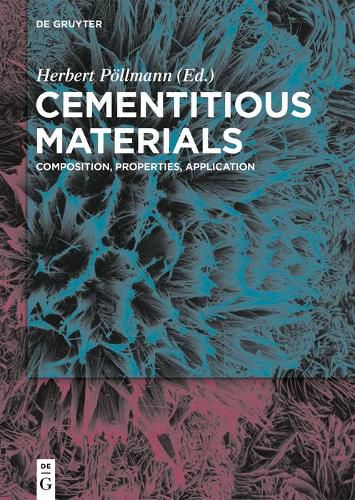Readings Newsletter
Become a Readings Member to make your shopping experience even easier.
Sign in or sign up for free!
You’re not far away from qualifying for FREE standard shipping within Australia
You’ve qualified for FREE standard shipping within Australia
The cart is loading…






This title is printed to order. This book may have been self-published. If so, we cannot guarantee the quality of the content. In the main most books will have gone through the editing process however some may not. We therefore suggest that you be aware of this before ordering this book. If in doubt check either the author or publisher’s details as we are unable to accept any returns unless they are faulty. Please contact us if you have any questions.
Aside from water the materials which are used by mankind in highest quantities arecementitious materials and concrete. This book shows how the quality of the technical product depends on mineral phases and their reactions during the hydration and strengthening process. Additives and admixtures infl uence the course of hydration and the properties. Options of reducing the CO2-production in cementitious materials are presented and numerous examples of unhydrous and hydrous phases and their formation conditions are discussed.
This editorial work consists of four parts including cement composition and hydration, Special cement and binder mineral phases, Cementitious and binder materials, and Measurement and properties. Every part contains different contributions and covers a broad range within the area.
Contents Part I: Cement composition and hydration Diffraction and crystallography applied to anhydrous cements Diffraction and crystallography applied to hydrating cements Synthesis of highly reactive pure cement phases Thermodynamic modelling of cement hydration: Portland cements - blended cements - calcium sulfoaluminate cements
Part II: Special cement and binder mineral phases Role of hydrotalcite-type layered double hydroxides in delayed pozzolanic reactions and their bearing on mortar dating Setting control of CAC by substituted acetic acids and crystal structures of their calcium salts Crystallography and crystal chemistry of AFm phases related to cement chemistry
Part III: Cementitious and binder materials Chemistry, design and application of hybrid alkali activated binders Binding materials based on calcium sulphates Magnesia building material (Sorel cement) - from basics to application New CO2-reduced cementitious systems Composition and properties of ternary binders
Part IV: Measurement and properties Characterization of microstructural properties of Portland cements by analytical scanning electron microscopy Correlating XRD data with technological properties No cement production without refractories
$9.00 standard shipping within Australia
FREE standard shipping within Australia for orders over $100.00
Express & International shipping calculated at checkout
This title is printed to order. This book may have been self-published. If so, we cannot guarantee the quality of the content. In the main most books will have gone through the editing process however some may not. We therefore suggest that you be aware of this before ordering this book. If in doubt check either the author or publisher’s details as we are unable to accept any returns unless they are faulty. Please contact us if you have any questions.
Aside from water the materials which are used by mankind in highest quantities arecementitious materials and concrete. This book shows how the quality of the technical product depends on mineral phases and their reactions during the hydration and strengthening process. Additives and admixtures infl uence the course of hydration and the properties. Options of reducing the CO2-production in cementitious materials are presented and numerous examples of unhydrous and hydrous phases and their formation conditions are discussed.
This editorial work consists of four parts including cement composition and hydration, Special cement and binder mineral phases, Cementitious and binder materials, and Measurement and properties. Every part contains different contributions and covers a broad range within the area.
Contents Part I: Cement composition and hydration Diffraction and crystallography applied to anhydrous cements Diffraction and crystallography applied to hydrating cements Synthesis of highly reactive pure cement phases Thermodynamic modelling of cement hydration: Portland cements - blended cements - calcium sulfoaluminate cements
Part II: Special cement and binder mineral phases Role of hydrotalcite-type layered double hydroxides in delayed pozzolanic reactions and their bearing on mortar dating Setting control of CAC by substituted acetic acids and crystal structures of their calcium salts Crystallography and crystal chemistry of AFm phases related to cement chemistry
Part III: Cementitious and binder materials Chemistry, design and application of hybrid alkali activated binders Binding materials based on calcium sulphates Magnesia building material (Sorel cement) - from basics to application New CO2-reduced cementitious systems Composition and properties of ternary binders
Part IV: Measurement and properties Characterization of microstructural properties of Portland cements by analytical scanning electron microscopy Correlating XRD data with technological properties No cement production without refractories